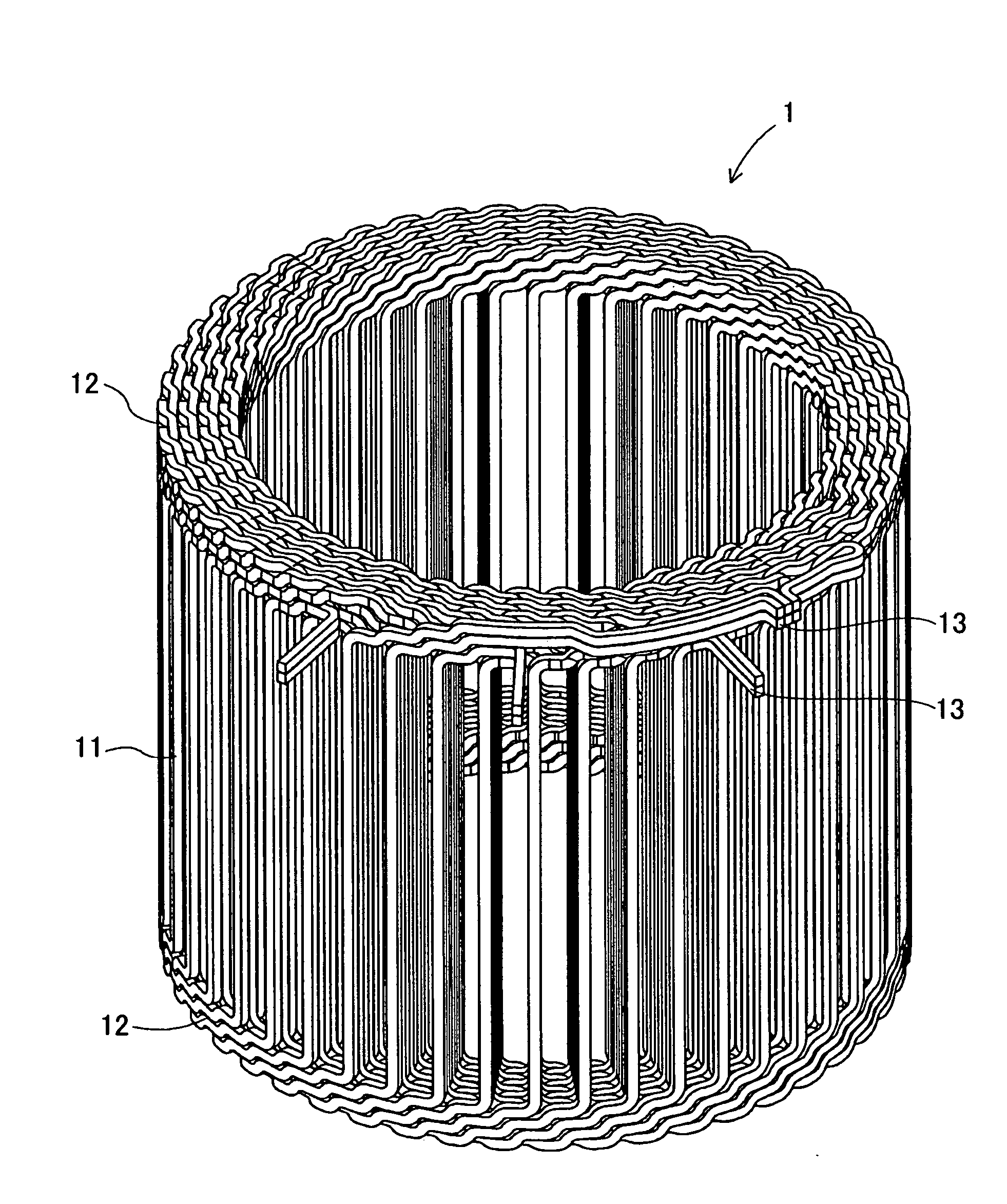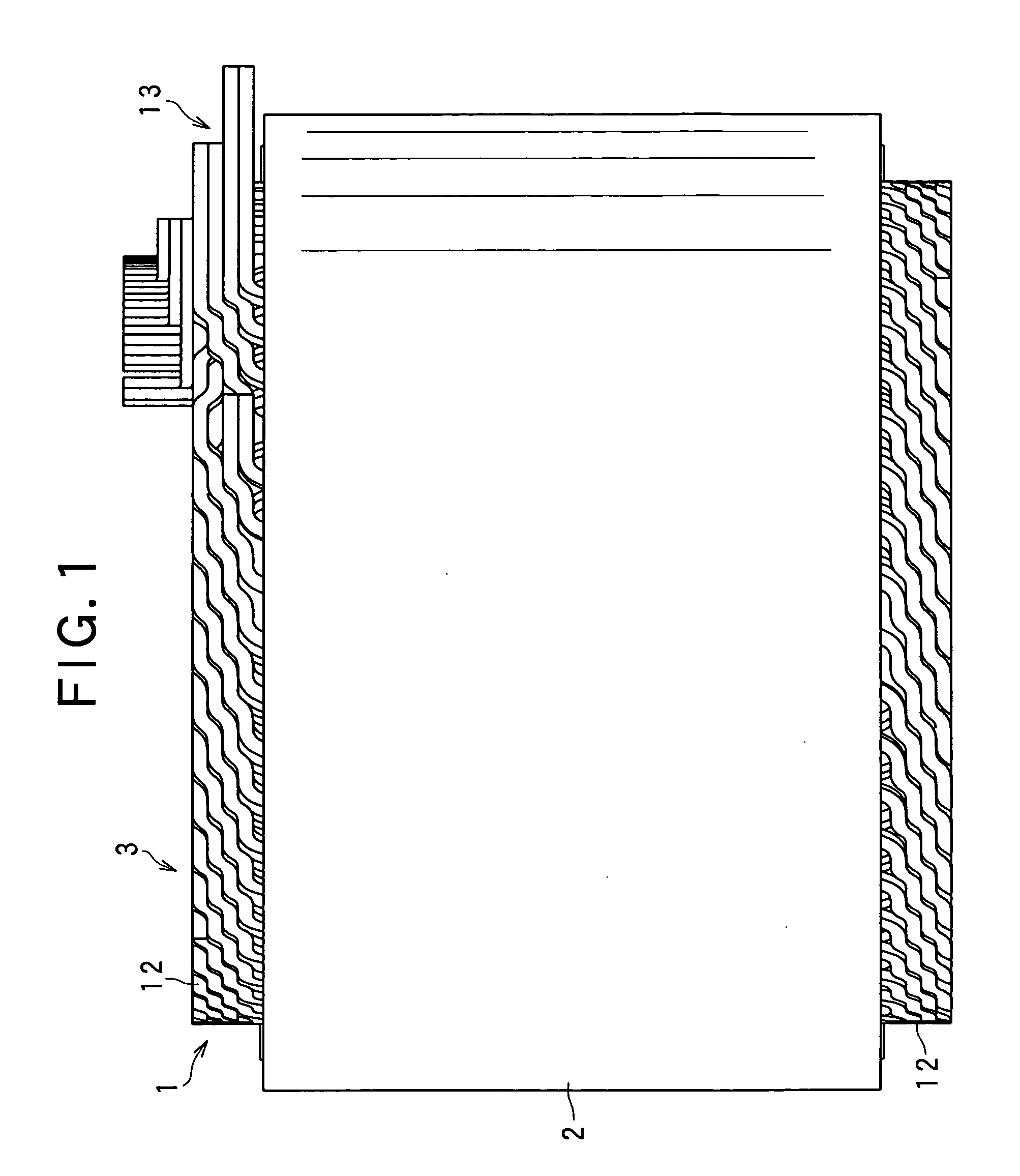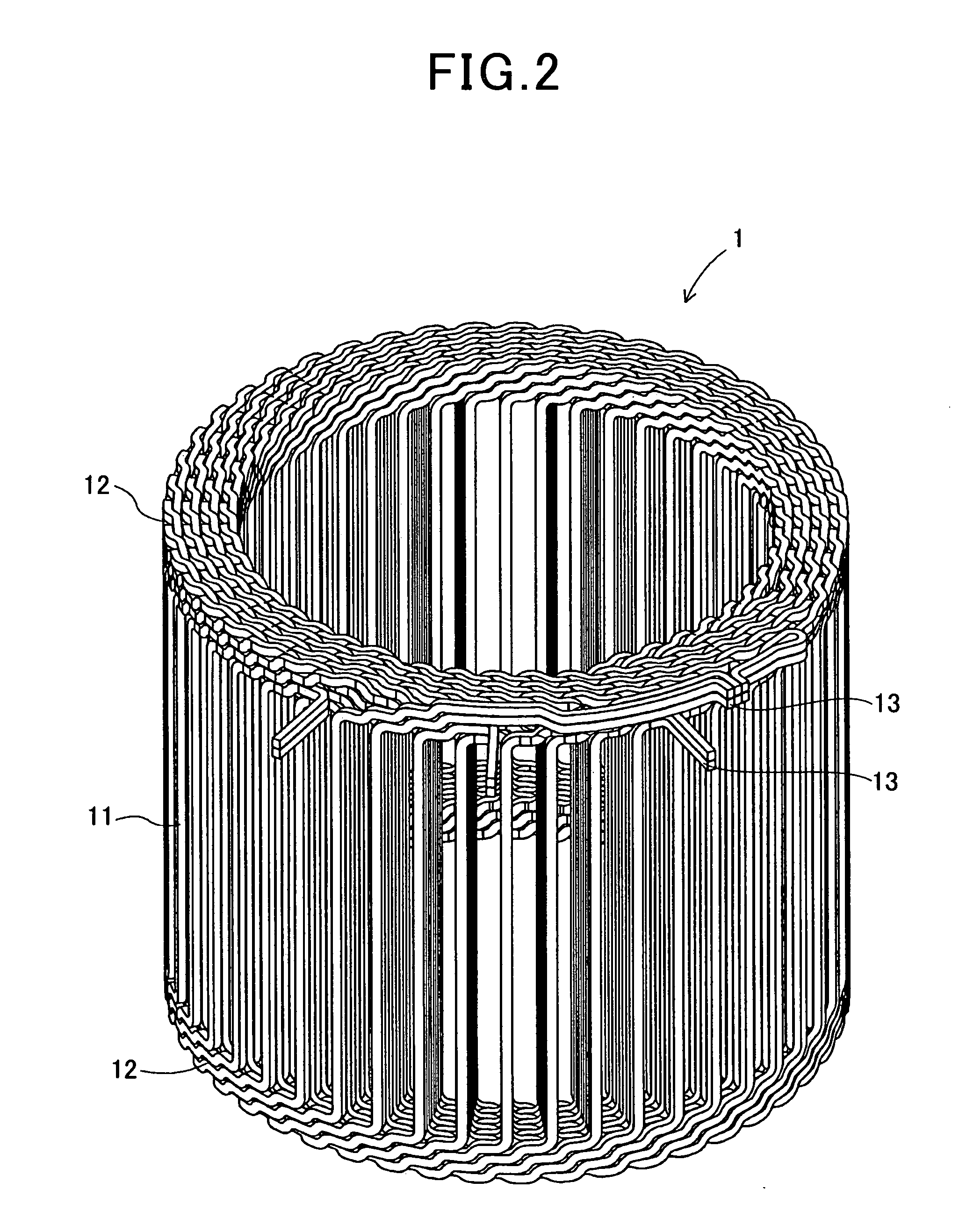Segment-core type stator for inner-rotor type rotary electric machines and an improved method for manufacturing the stator
- Summary
- Abstract
- Description
- Claims
- Application Information
AI Technical Summary
Benefits of technology
Problems solved by technology
Method used
Image
Examples
first embodiment
[0043]Referring to a side view shown in FIG. 1, an example of a stator structure is described.
[0044]FIG. 1 shows a stator 3 for a radially-gaped inner-rotor type rotary electric machine. The stator 3 includes a stator coil 1, a stator core 2 into which the stator coil 1 is fitted.
[0045]The stator coil 1 is configured by star-connecting three-phase windings, each of which is obtained by winding in a distributed manner a large-size flat conductor wire having a large cross-sectional area. Thus, the stator coil 1, as a whole, has the shape of a cage.
[0046]The stator coil 1 includes a number of slot-accommodated portions 11 which are conductive parts to be inserted into respective slots of the stator core 2. The stator coil 1 also includes coil end portions 12 which are conductive parts projected axially outward from both ends of the respective slot-accommodated portions, or in other words, projected from both end faces of the stator core 2. In FIG. 1, the slot-accommodated portions are ...
first modification
(First Modification)
[0071]Preferably, the circumferential positions of the mutually bonded faces of the half-cylindrical segment cores 4, 4 for configuring each of the end cores 21, 22 may be circumferentially offset from the circumferential positions of the mutually bonded faces of the arc segment cores 5 for configuring the center core 23. Thus, magnetic resistance can be reduced.
second modification
(Second Modification)
[0072]In the above embodiment, the intermediate cores 21′, 22′ have been arranged between the end cores 21, 22 and the center core 23, and each of the intermediate cores 21′, 22′ has been configured by the half-cylindrical segment cores 4, 4, similar to the end cores 21, 22. In this case as well, it is preferable that the circumferential positions of the mutually bonded faces of the half-cylindrical segment cores 4, 4 for configuring each of the end cores 21, 22 may be circumferentially offset from the circumferential positions of the mutually bonded faces of the half-cylindrical segment cores 4, 4 for configuring each of the intermediate cores 21′, 22′. Thus, magnetic resistance can be decreased.
PUM
| Property | Measurement | Unit |
|---|---|---|
| Angle | aaaaa | aaaaa |
| Diameter | aaaaa | aaaaa |
Abstract
Description
Claims
Application Information
 Login to View More
Login to View More - R&D
- Intellectual Property
- Life Sciences
- Materials
- Tech Scout
- Unparalleled Data Quality
- Higher Quality Content
- 60% Fewer Hallucinations
Browse by: Latest US Patents, China's latest patents, Technical Efficacy Thesaurus, Application Domain, Technology Topic, Popular Technical Reports.
© 2025 PatSnap. All rights reserved.Legal|Privacy policy|Modern Slavery Act Transparency Statement|Sitemap|About US| Contact US: help@patsnap.com



